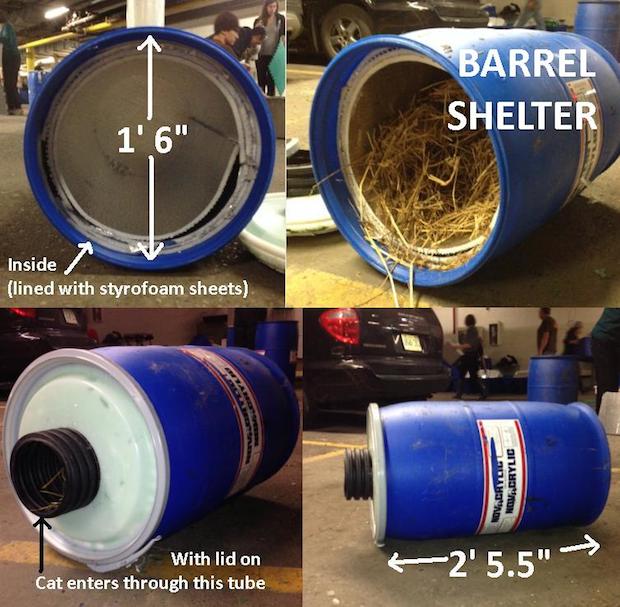


According to Bill Howes of Toronto Street Cats, there are “about 100, 000 feral cats” in Toronto. His organization is one of several in the city that works to care for these animals and control their population.
These vast numbers of cats come from lost pets, abandoned cats and cats born to the street, says Howes.
“They generally live in colonies of three to thirty cats,” he says.
Several Toronto volunteer organizations place homemade cat shelters near colonies along with food and water. This makes it easier for the cats to be trapped, spayed/neutered and then returned to the colony. Volunteers then continue to manage the colony by providing supplies and trips to the vet when needed and the cats can be caught.
Many of these cats cannot be adopted into homes because they are simply too feral says, Roxanne St. Germain from Toronto Feral Cat Project. Because of bad experiences with humans, many of these cats are much too frightened of people to ever live in a home.
“The more successive generations are born on the street the more feral they become and they are not adoptable,” she says.
Some adult cats that were once happy pets can be adopted into a home. They are generally trusting of humans.
“The cats that are trusting are probably more sociable,” St. Germain says.
St. Germain a says when kittens are born they are monitored so they can be removed at eight weeks. She says when they are older than twelve weeks, it is too late as they are terrified of people.
When asked about socializing an adult cat that was born on the street she says it is possible but nobody has the time with all the cats that need help.
Volunteers line shelters with straw, which keeps them warm and dries quickly if it gets wet.
Without these shelters the cats are also at risk of dying of exposure, says Robin Sarafinchan from Cherry Street Cat Rescue.
“I have read about cats getting frostbitten ears, and when they have a shelter we can get them to a vet when they need one.”
Sarafichan says one of her friends has cared for the same cats for over a decade in a nearby colony.
All these organizations always need volunteers, donations and help building shelters. All will provide information on building a shelter for nearby strays and will often provide food for the ferals.
For more information, visit the websites of Cherry Street Cat Rescue, Toronto Feral Cat Project, and Toronto Street Cats.






